Reflections in Space Helmets
Featuring... a lot of examples.
A few emails back, I did a big roundup of Rendezvous With Rama cover art. (see what you’re missing, free subscribers??)
In it, I wrote this:
Stanislaw Fernandes has a nice 1978 cover that uses the old “impressive sight is reflected in a space helmet to signal an emotional reaction from the unseen astronaut” trick.
It’s a nice trick! By showing the person beholding a view at the same time as the view itself, the cover art forces its reader to imagine what might be going through the person’s head. Some real “Ways of Seeing” stuff. I should do a whole email about other examples some time.

This is that email! Let’s dive right in, there’s a lot to cover.
First, here’s a straightforward example from Rick Guidice. It was never a book cover: It’s official NASA concept art, titled 'Space Settlement.' Concept art had some flair back in the day.

Bruce Pennington has the rare double reflection in a 1973 cover to Asimov’s Space Ranger.
At least, I think he does? Not quite sure what’s happening with these reflections, to be honest. I do like that each of this guy’s nostrils gets its own discrete oxygen tube.
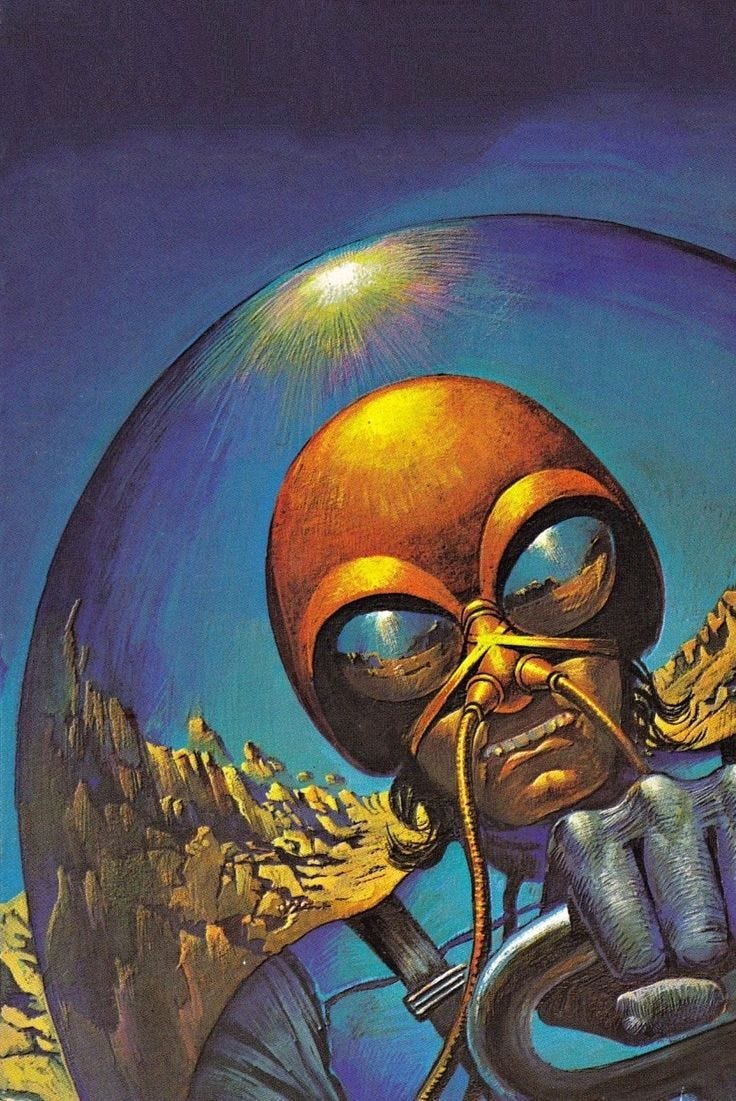
Here’s the 1980 cover art to the Italian-language Grande Enciclopedia della Fantascienza, although I wasn’t able to track down an artist credit.
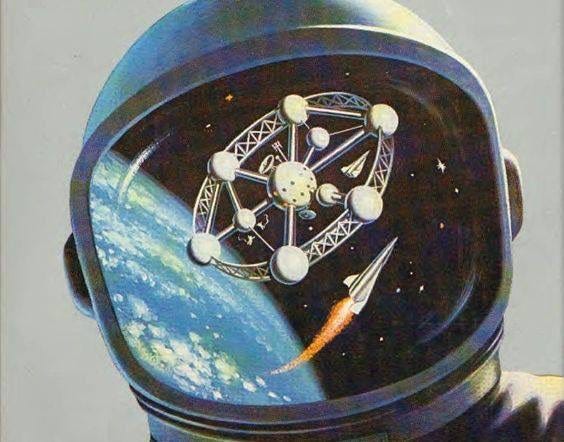
Peter Elson did his take on the space helmet reflection for a 1981 cover to Arthur C. Clarke’s Of Time and Stars:
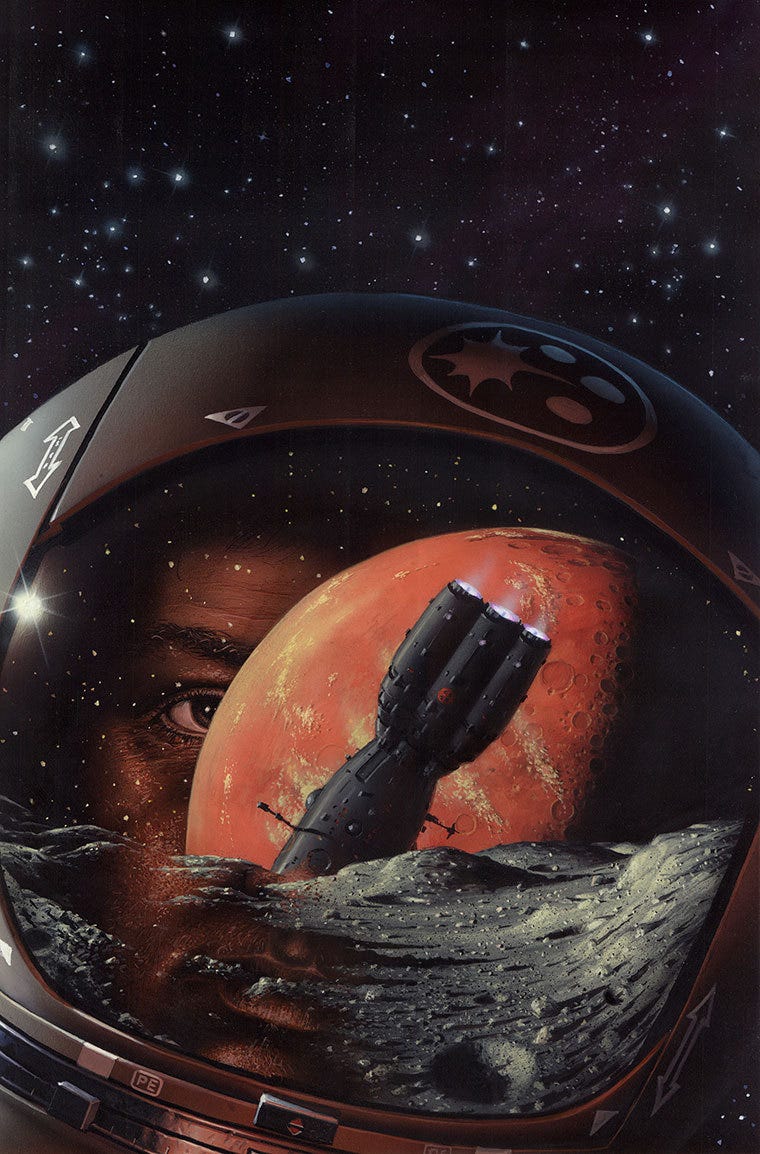
Next up is David O'Connor’s 1980 cover to Who Goes There? by Edward Edelson.
Here, the helmet reflection helps push the idea behind the title by putting the viewer in the space shoes of the astronaut who might be asking that eponymous question.
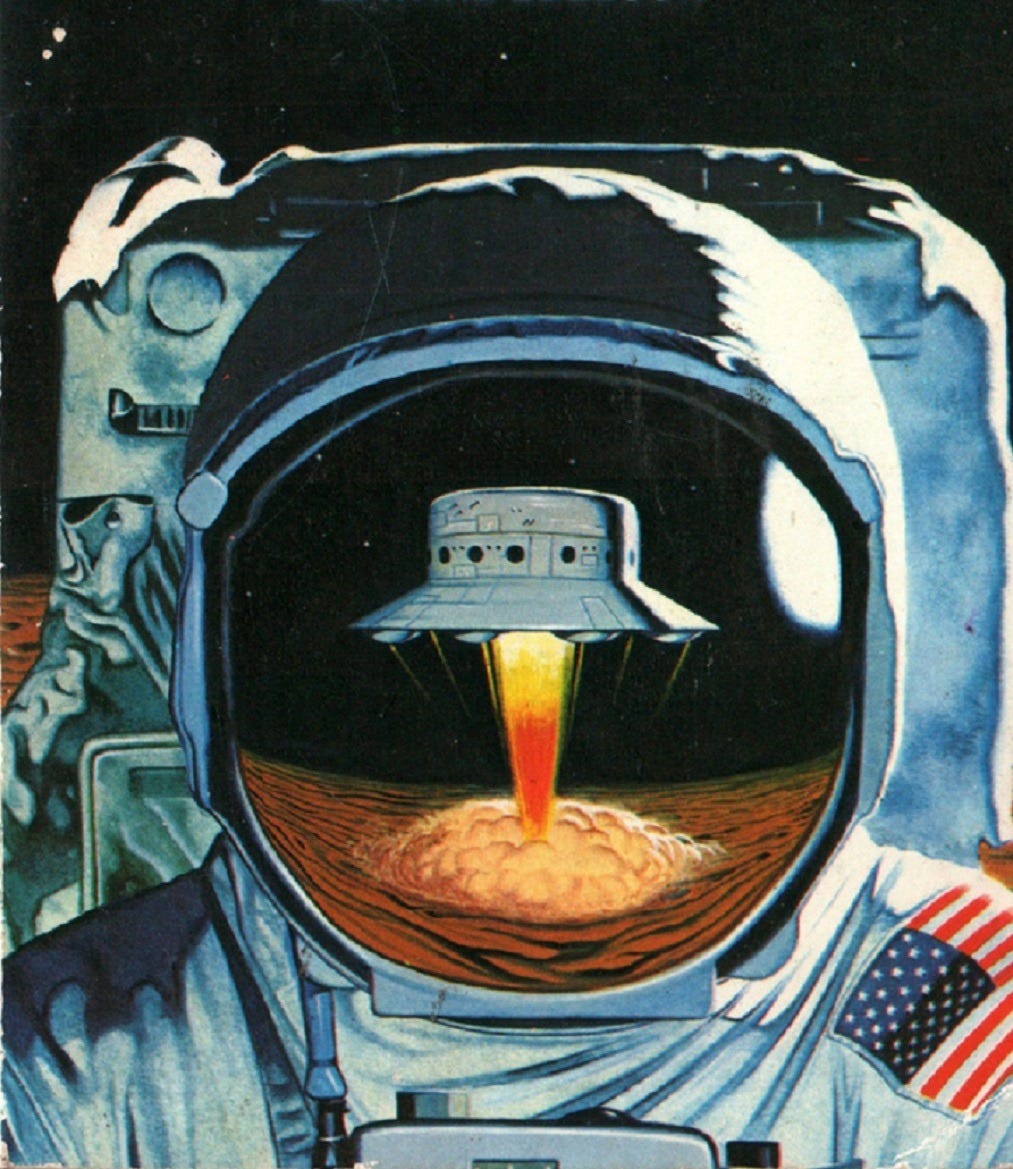
Ditch the space helmet for a firefighter’s helmet, add a cheeky identification number, and you have Steve Crisp’s 1990 cover to a Ray Bradbury classic that you probably don’t need me to name.
Although maybe he’s just burning this one book because chapter one doesn’t start until halfway through. That prologue was too long, it needed to go.
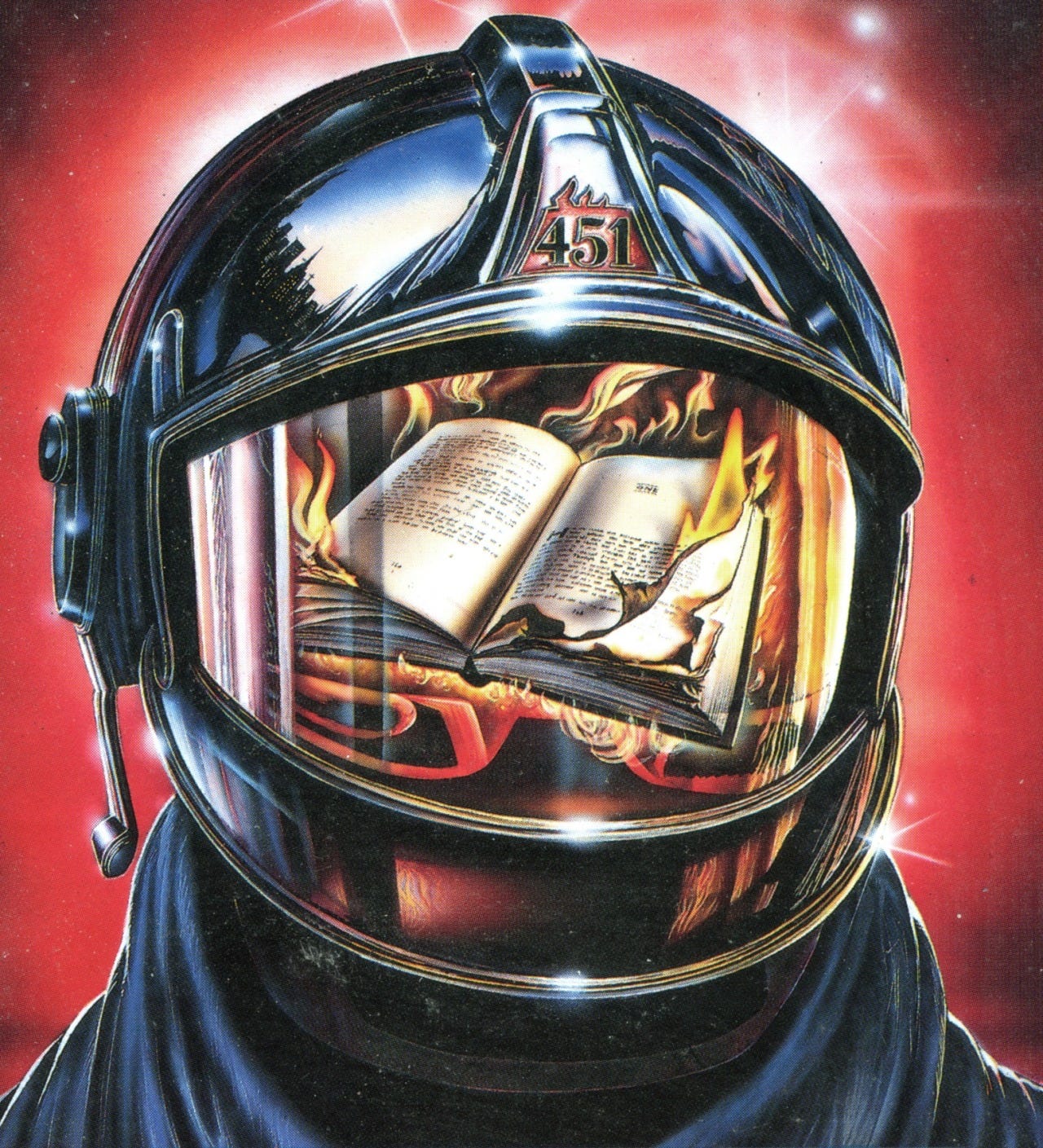
Even further into the 90s, we have Chris Moore’s ‘95 cover to Canby’s Legion by Bill Baldwin.
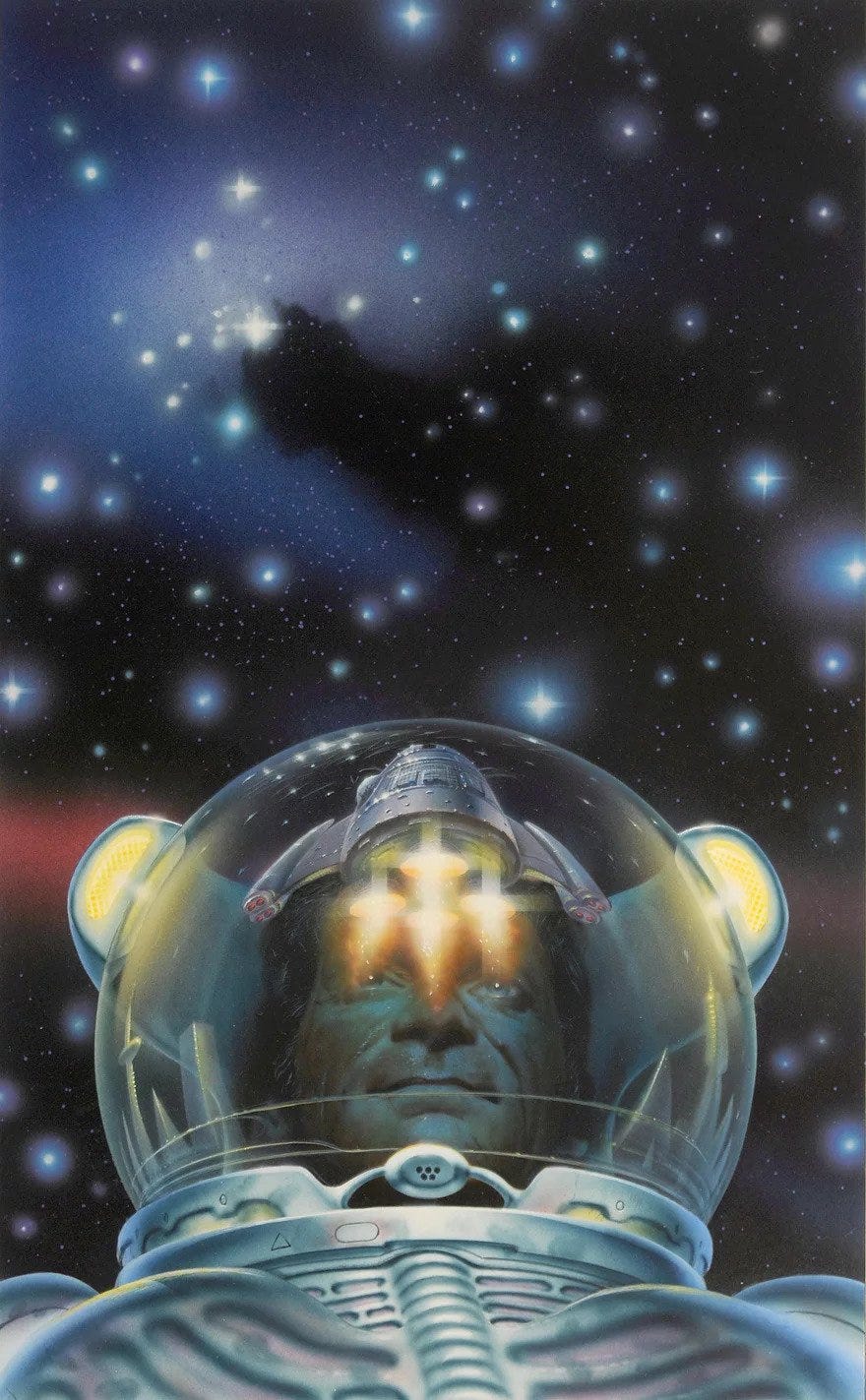
Alex Ebel’s 1978 album art for Roy Buchanan’s You're Not Alone opts for a unique reflection:

Johnny Bruck took a crack at it, and even slipped his signature onto the spacesuit itself.
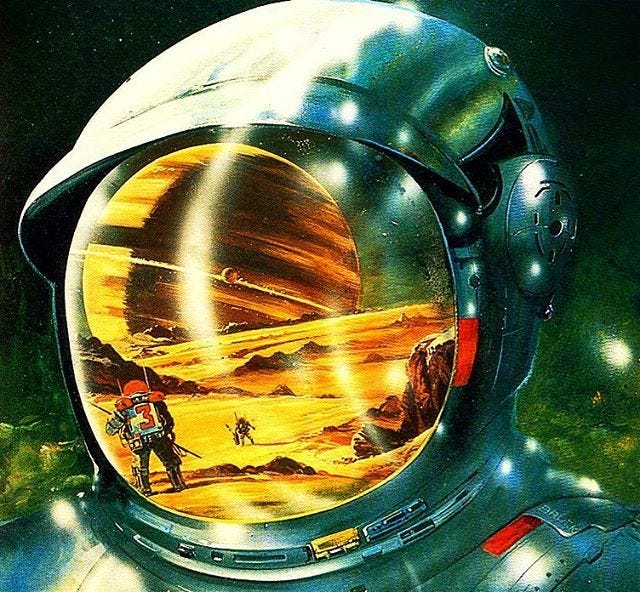
Lest you think space helmet reflections are constrained to representational works, here’s a slightly surreal version from Ron Walotsky. Titled “Spaceman,” it showed up undated in his 2000 art collection Inner Visions.

I couldn’t find an official artist credit for this one, but it’s totally by the Brazilian artist Hans Hermann Swoboda, who loved this exact color pallete and only this exact color pallete — here’s other art from him for comparison.
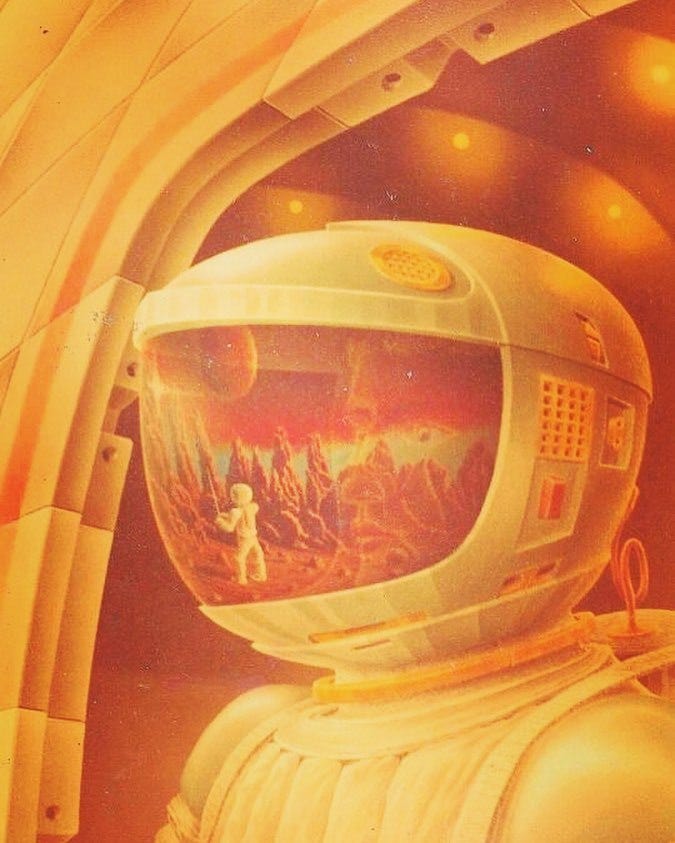
Finally, the cream of the reflective crop: Paul Chadwick’s 1981 cover to Jack Vance’s Dust of Far Suns.

Not content with one space helmet reflection, Chadwick includes four of them, each one offering a different slice of a scene that’s unfolding off-screen.
The astronauts are all color-coded so the viewer can parse what’s going on a little quicker, but personalizing spacesuits is honestly a great idea in general. Look how often people personalize their face masks in 2020; We would definitely all have bizarre patterns and memes on our spacesuits in the future. Bumper stickers, at the very least.
Honorary mention goes to this work, ‘Reflections of Future Past,’ by Kurt C Burmann, 1983. It’s an eye, not a space helmet, but boy is it reflecting a lot.
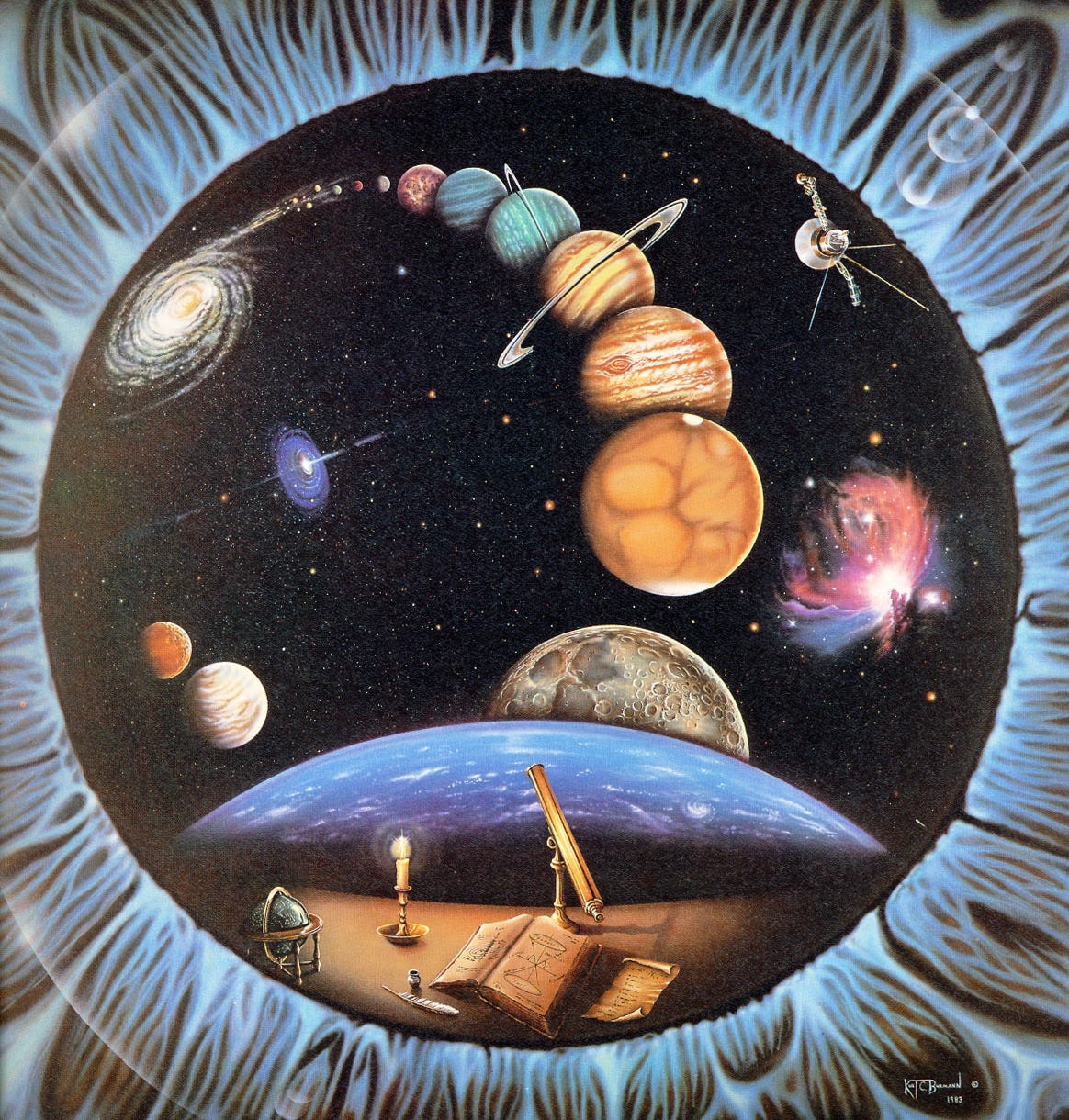
And let’s not forget sci-fi film, where the space helmet reflection truly has its chance to shine, as this compilation shows:
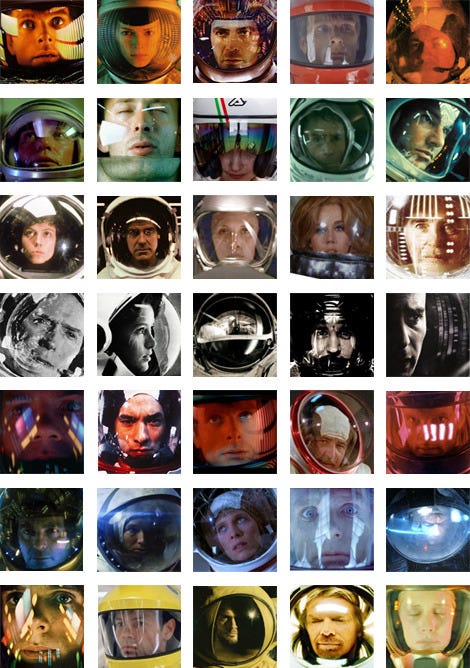
That’s all for now! Glad we took some time to reflect here. Also I’m sorry about that pun, I just don’t know how to end this email. Bye! Have a good week! Talk soon! Bye.